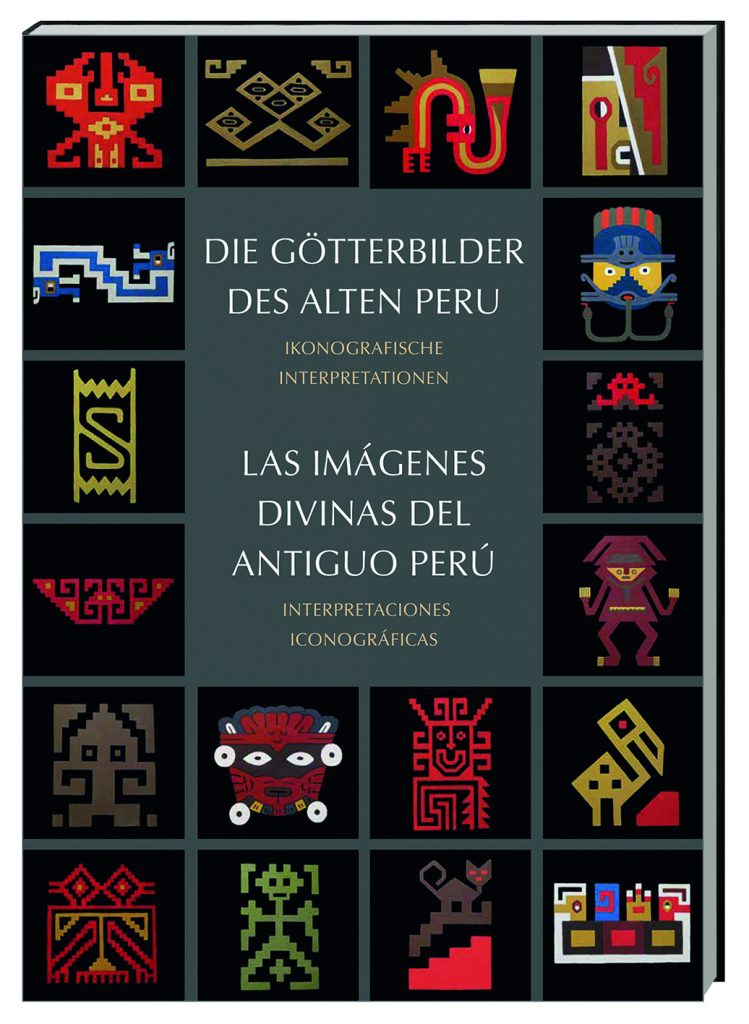
The images of the gods of ancient Peru – Iconographic interpretations
The extremely varied iconography in ancient Peru was an essential element in the representation of the images of the gods, this over a period of about 2500 years. Their presentation reveals itself as the trinity of an image of the supreme god and the assignment of the combination of an equally symbolic representation of the earth goddess and the god of water. This idol was probably already created in the early Chavin period around 1000 BC. by the priests there and subsequently underwent several elementary changes in its appearance without, however, changing its religious content. Chronicles of the Spanish conquistadores from the 16th century already report of a creator god who was presented as a pair of gods. As a symbolism, their image dominates the Peruvian iconography as a so called steps wave and/or snakes wave. The image, which at first was dominated by the feline, changed around 500 AD by adding the harpy in order to create a hybrid representation. Subsequently at Paracas, substitutions of both characteristics were made by means of two masks Front mask an mouth mask). Nasca adopted this image of gods at the turn of the century. Tiahuanaco and Huari also used such substitutions in the first new millennium. Moche dominated simultaneously with geometric and emblematic images of gods, which used both attributive symbolisms, step and snake wave. After 1000 AD this continues with the predominantly anthropomorphic images of gods during the Chimú and Lambayeque cultures. In Chancay and some cultures of the southern coast, the feline god’s image regained dominance between 1200 and 1450 AD and at the same time the coastal bird regained its sacred character. This may also suggest an association with the hybrid representations of Chavin. The Inca Empire succeeded in dominating the entire Andean region from 1450 AD until the Spanish conquest in 1532 AD but the image of the gods largely retained its significance.
The representation of the images of gods is mainly revealed in textiles, but also on ceramics, murals, metal and other objects. In the entire presentation, as well as in the details, the symbolic character has to be perceived, since no reference to real appearances is revealed here. Geometrisation and abstraction made it possible to present these designs in a concise and memorable way, right down to minimalism, so that they were useful leitmotifs for the priests in the development and maintenance of agriculture and water management as the basis of life. This was the essential prerequisite for the peoples of ancient Peru to develop into prosperous communities and to continue them as advanced civilizations for centuries. Thereby, the religious organization and the presentation of a logical and beneficial image of gods was an elementary prerequisite and content of daily life.
The book reveals the emergence and variation of the image of the gods of ancient Peru, beginning with Chavín and ending with the Incas, over a period of nearly 2500 years.
The pictures on the front page show a small but representative selection of images of gods of ancient Peru. They are painted details of such images in textiles from different cultures between 1000 BC and 1500 AD.
The pictures in the text show images of gods in textiles from Chavín, Paracas, Nasca , Tiahuanaco, Huari, Moche, Chimú, Lambayeque, Chancay and other cultures. Besides the image of the supreme god, all of them express the complementary symbolism of fertility (step wave or/and snake wave) as a symbol of the combination of earth goddess and water god.
Information about the book: Format 22 x 29 cm, 236 pages, bilingual German and Spanish, 680 illustrations in color / black and white. ISBN number 978-3-00-066060-3.
The book is preferably available by direct order from the author. Price 35 EUR
E-Mail: iconography@uwe-carlson.com
>> Die Götterbilder des alten Peru – Reading Sample (PDF)
The reading sample comprises 33 pages of the book, including the complete table of contents. Version in German language.